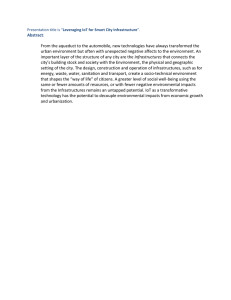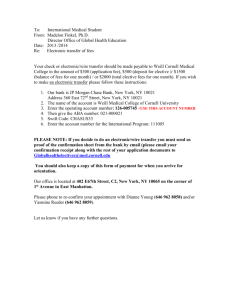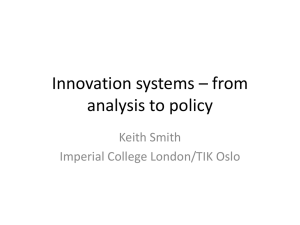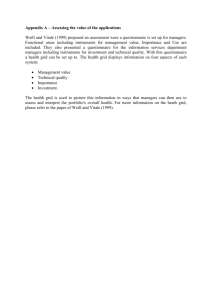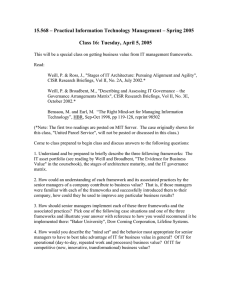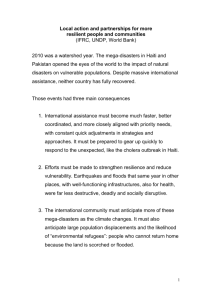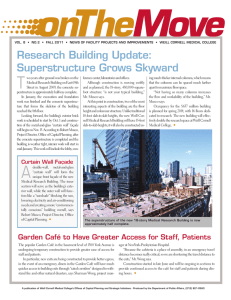IT Architecture & Infrastructure
advertisement
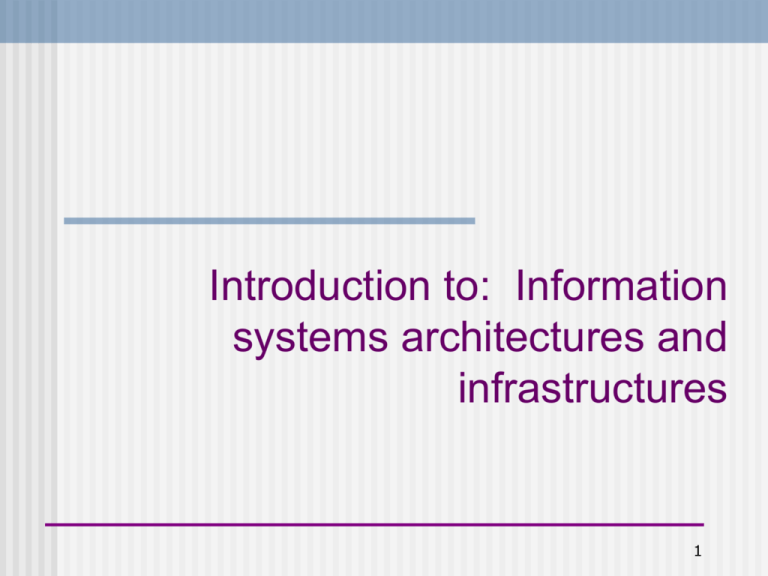
Introduction to: Information systems architectures and infrastructures 1 A Top-Level View Information System •Managers •Users •Customers •Tech Staff People •Accurate •Timely •Relevant Information •Structured •Unstructured Processes •Payroll •Order Entry •Inventory •Reservations Technology •Hardware •Software •Network 2 Weill IT Infrastructure Graphic 3 IT Infrastructure (Weill & Vitale 2002) Foundation of a firm’s IS portfolio IT components (servers, printers, routers, operating systems, DBMSs, groupware, etc. Shared IT services (e.g., channel mgmt, security, data management, etc. Shared standard applications (ERP, CRM, i.e., stable, applications used across the enterprise) Human IT Infrastructure (the knowledge, skills and experience of the folks that make the infrastructure work) 4 REACH Thinking About IT Infrastructures: Reach & Range Anyone, anywhere Customers, suuppliers regardless of IT base Customers, suppliers w/ the same IT base as ours Across different business units abroad Across different business units domestically Across geographicaly spread singlebusiness locations Withina singlbusiness-unit location RANGE --> Yes Yes Yes Yes Yes Yes Yes Yes Yes Yes Yes Yes Yes Yes Yes Yes Yes Yes Yes Yes Send Access to Perform messages stored simple informatio transactions n/inranet Perform complex transactions on multiple applications 5 So why do (or should) we care? We need to relate the concept of information systems and IT infrastructure to the management and organizational issues that we have been discussing. We need to relate the design and selection( i.e., the architecture) of the IT infrastructure to the business or strategic needs of the organization. We need to be able to communicate and educate the user community regarding these systems and services so that they can meaningfully participate in the IT decisions that impact business operations. We need to be able to communicate and educate the user community regarding the implications that IT architecture and infrastructure decisions have for the organization. 6 Investing in Infrastructure: Four Views No view: no recognition of requirement for firmwide infrastructure. Utility view: infrastructure is important but key focus is on minimizing costs Dependent view: Firm recognizes that infrastructure supports current business strategy and is expected to support synergy between business units Enabling view: Implies over-investment in infrastructure with eye toward maximizing flexibility to implement new capabilities. 7 Infrastructure Issues Infrastructure presents real challenges for IT management in terms of: Identifying what should be included in the infrastructure Aligning infrastructure with strategy Selection and enforcement of standards Budgeting Governance: who makes the calls? No “right” answers 8
